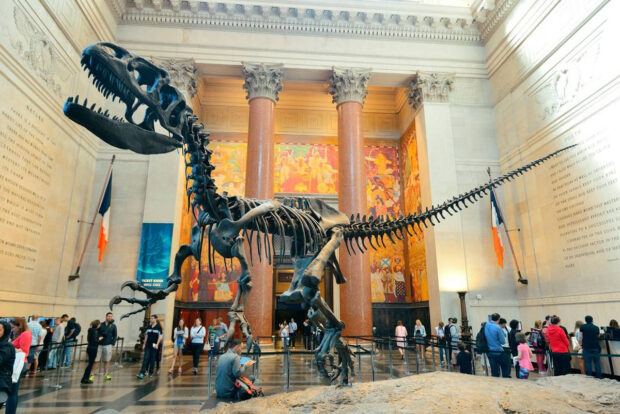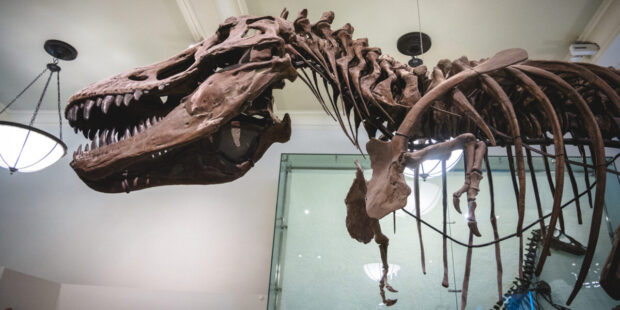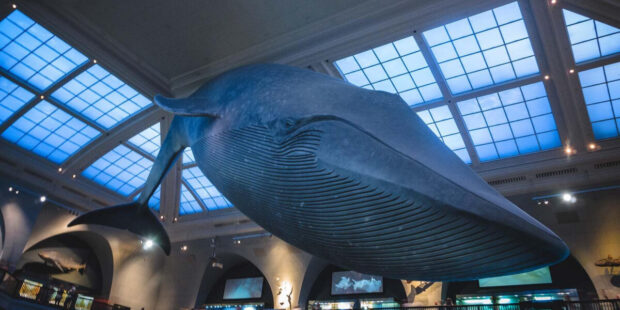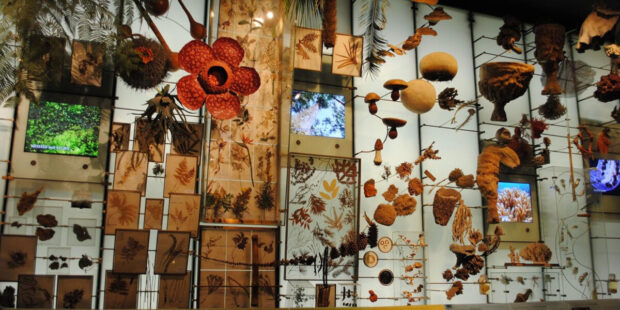
The American Museum of Natural History in New York is one of the largest and most important museums of natural history in the world. Embark on a journey from the Stone Age to the Space Age, from the dinosaur skeleton to distant galaxies, explore the past and learn about our life on planet earth.
Natural history museum sounds boring? Not in New York! Of all the city’s world-famous museums, the American Museum of Natural History is one of our absolute favorites. We not only recommend it to families in New York, but also to museum grouches and history builders. From original dinosaur skeletons to a life-size blue whale, we reveal our 5 highlights, all the important information, and how you can get to the Museum of Natural History for free.
The American Museum of Natural History in New York has been around since 1869. It stretches over four blocks over an incredible 111,483 square meters directly on Central Park West. Many of you have probably already seen the New York Museum in the famous film “Night at the Museum” with Ben Stiller. In the heart of Manhattan, the American Museum of Natural History is one of the greatest scientific and cultural institutions in the world and houses an impressive 33 million objects.
The architecture of the building is as unique as its size, as the museum consists of an incredible 25 interconnected buildings. As a first-time visitor, of course, you don’t even know where to start.

An impressive collection of partially original dinosaur skeletons can be found on the fourth floor of the museum.
It’s exciting to see how huge and almost terrifying these creatures were. You can find out all the details about the origins, the evolutionary stages, and which descendants still exist today. The most popular photo motif is right in the entrance hall: the life-size skeleton of a T-Rex.
Watch the sunrise in space on a glass floor at the Hayden Big Bang Theater. The 27-meter diameter, illuminated glass dome can be seen from the outside and is one of the most popular attractions of the Museum of Natural History NYC. The 4-minute Big Bang performance simulates the Big Bang and invites you to take a walk on the Cosmic Pathway.
The Rose Center for Earth & Space, in which the Big Bang Theater is located, is a must-see for anyone interested in space. The detailed accumulation of information about space, space travel, and our planet earth is really overwhelming.
The Guggenheim Hall of Minerals and Morgan Memorial Hall of Gems is the place with arguably the museum’s most valuable treasures. Arranged systematically according to their physical properties, there is an enormous range of sizes, colors, and shapes. The greatest treasure is the “Star of India”, with a weight of 563 carats the largest and most famous sapphire in the world. The “Patricia Emerald”, a 632-carat emerald, is also one of the few large specimens that have been preserved uncut.
READ: 25 Top-Rated Tourist Attractions & Things to Do in Dubai
The Imax cinema in the Natural History Museum is the cinema with one of the largest screens in New York. Who would have thought? Changing films on the subject of natural history are shown here. Sounds boring at first, but it’s not. Accompanying the great white shark for a food hunt in 3D in the ocean has something to do with it. The documentaries shown there regularly win highly regarded prizes and for that reason alone are more than worth seeing.

The blue whale in the Natural History Museum.
The Milstein Hall of Ocean Life offers over 2,500 square meters a vivid insight into the creatures of our oceans, illustrated by videos and interactive computer terminals, you get a comprehensive overview of life underwater.
See also 10 World-Famous Paintings Exhibited in NYC
The highlight here is the 28.6-meter long blue whale, one of the main attractions of the Natural History Museum, which swims in a virtual ocean created with the help of lighting, video, and audio effects. The Andros coral reef informs the visitor about the ecosystem above and below water.

The science area in the natural history museum.
The science section of the museum is always looking for new exhibits. 47 curators, 200 researchers, and 70 scholarship holders are currently employed in this area. It has 2 high-tech molecular laboratories and one of the largest natural history libraries. Many scientists are also available to answer questions and provide an insight into their work.
Around 100 research expeditions to all parts of the world are carried out every year. In this way, it was possible to collect the impressive number of 33 million copies and objects, of which only about 1% is exhibited due to lack of space.
THERE ARE OVER 33 MILLION OBJECTS IN THE MUSEUM OF NATIONAL HISTORY!
This number again shows the dimension of the American Museum of Natural History in New York and the worldwide importance of its research work.
Like us on Facebook for more stories like this: